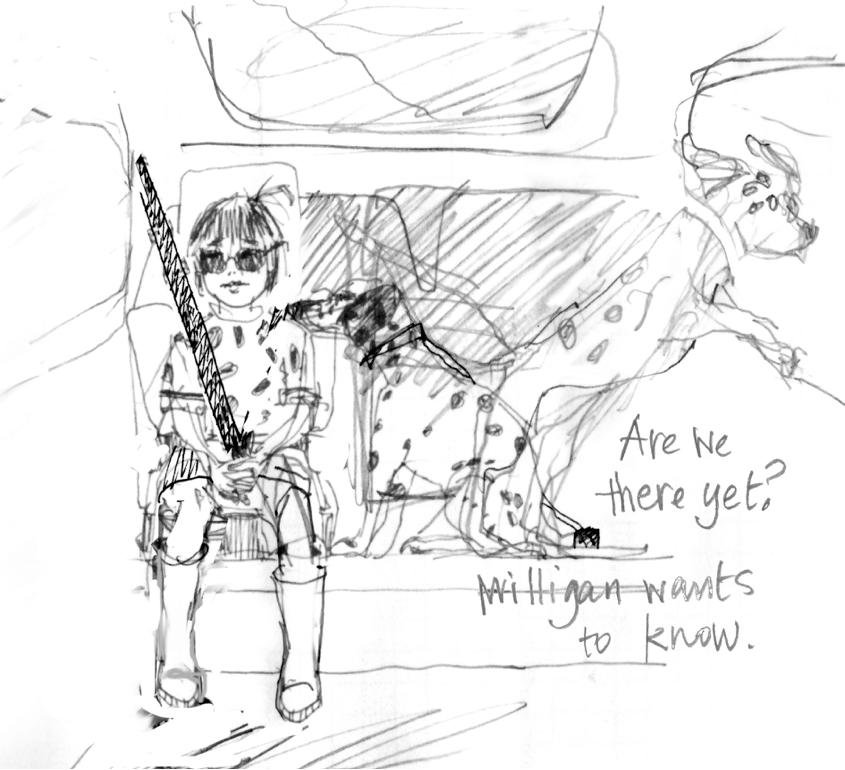
ARE WE THERE YET?
“Are we there yet?” Margot asks, and the answer is of course yes!In fact, publication day has arrived. After almost one year on the road and in the making, Margot and Milligan Curious as Cats is officially released today. So it seems fitting that on this day I should also write my first blog.
Alongside all these firsts I thought it appropriate to reveal the very first drawing of Margot. I hope it gives a glimpse of what goes into character development. Margot has changed of course, hair more wild and she doesn’t wear that pigtail off to one side, but this is where she begins to take charge of the story. I felt Milligan looked too much like a puppy, so an older dog is sketched over with head out the window, ears flapping and excited to take in the farm aromas.
I find it interesting watching other author/illustrators give a sneak peek and reveal an early sketch of a character while they’re still in the process of writing their story. One can see how the character starts to take shape from the writer’s imagination, images forming from descriptions and actions to describe elements of personality, which can present in posture, gesture, facial expressions and so on. What colour hair, straight or curly? How tall? How do they interact with the other characters?
Very soon the character starts to live, to grow and learn, to be independent and to even change the story by making decisions which take the writer by surprise.
As I wrote Curious as Cats, the words “followed closely by Milligan” evoked an image of a small and sometimes confident child who loves animals, with a pet dog who follows her everywhere on her adventures. But without spoiling the story, in the opening pages Margot is on her way somewhere, in the car, with her dog in the back seat beside her. She’s a little tired, or has just woken after a long drive and either way, she wants to see her Pa. Speaking on behalf of Milligan of course, she utters that all too familiar question, “Are we there yet?”
Read on readers!
Janette
Post Views : 601